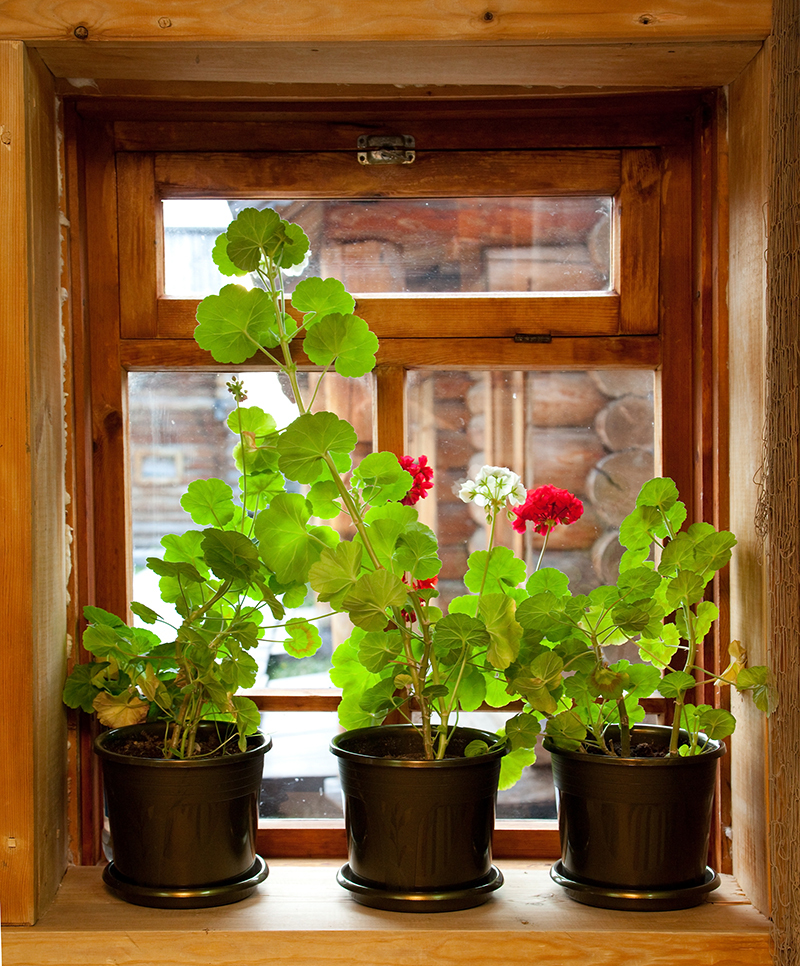Peel back the layers of sunflower history to find the surprises
Posted on 17/08/2025
Peel Back the Layers of Sunflower History to Find the Surprises
Sunflowers are more than just strikingly beautiful blooms--they have an extraordinary story waiting within each petal and seed. If you've ever admired a sunflower's towering height or hypnotic golden face, you might wonder about the journey that led this plant from wild fields to your gardens, kitchens, and works of art. Let's peel back the layers of sunflower history and examine the surprises that have shaped this beloved plant through the ages.
The Origin of Sunflowers: Where It All Began
Sunflower origins can be traced to the heart of North America. Long before they adorned modern landscaping, sunflowers (Helianthus annuus) flourished wild across prairies, woodlands, and open spaces. But what is the true story behind their domestication and dispersal?
Native Sunflowers and Ancient Cultivation
- Early Domestication: Archaeological evidence suggests that Native American tribes began cultivating sunflowers over 4,500 years ago in present-day Arizona and New Mexico.
- Multipurpose Plant: Indigenous peoples valued sunflowers for their seeds, oil, dyes, and even as materials for construction and ceremony.
- Ritual and Symbolism: Sunflowers represented abundance, the sun, and spiritual connection in many native cultures.
It's fascinating to note that, while most staple crops like corn and beans were first cultivated in the Old World, the sunflower is one of the few major economic crops domesticated in North America.
A Traveler's Tale: Sunflowers Cross the Globe
After Europeans arrived in the Americas, sunflowers caught their attention not only for their beauty but also for their robust seeds and potential for oil extraction.
- By the 16th century, Spanish explorers exported sunflower seeds to Europe, where the plant quickly became a garden ornament and curiosity.
- It was Russia that truly embraced the sunflower, advancing its cultivation during the 18th and 19th centuries. Unexpectedly, the Russian Orthodox Church played a major role, as it had prohibited most cooking oils during Lent--except for sunflower oil!
- By the late 1800s, Russians had bred sunflowers yielding much larger heads, transforming their agricultural value.
Peeling back the layers of sunflower historical journeys reveals how this North American native became a global phenomenon.

The Many Surprises in Sunflower History
With roots reaching deep into ancient times and tendrils spreading worldwide, what surprises lurk in the evolution of the sunflower? Let's examine the unexpected twists and innovations inspired by this remarkable plant.
Sunflower Innovation: From Seeds to Science
- Genetic Marvel: While the classic bright yellow flower is familiar, wild sunflowers display diverse sizes, shapes, and colors. Native species vary from dwarfs barely a foot tall to giants over three meters in height!
- Edible and Industrial Uses: Sunflower seeds have become a snack food staple, yet the plant's oil is used in salad dressings, cooking, cosmetics, paints, and eco-friendly fuels.
- Phytoremediation Power: After the Chernobyl nuclear disaster, scientists planted sunflowers to remove toxins and radioactive isotopes from the soil--a process called phytoremediation. This unsung hero helps heal polluted land worldwide.
Sunflowers in Art, Culture, and Symbolism
- Van Gogh's Muse: The sunflower is forever immortalized in some of Vincent van Gogh's greatest works, symbolizing hope, happiness, and vitality.
- Culture and Spirituality: In the Victorian "language of flowers," sunflowers conveyed pure thoughts and loyalty. Indigenous peoples saw it as a powerful emblem of the sun's life-giving force.
- Modern Icon: Today, the sunflower stands for sustainability, environmentalism, and peace, even earning its place as the national flower of Ukraine.
Hidden Surprises: Unexpected Roles Throughout Time
- Early Medicine: Native Americans utilized sunflowers for treating wounds, chest pain, and kidney ailments--a testament to the hidden medicinal history of the plant.
- Symbol of Protest: The sunflower became a symbol for environmental campaigns, notably the "Sunflower Movement" in Taiwan and anti-nuclear protests across the globe.
- Unique Mathematics: The spiral pattern of seed arrangement in a sunflower's head reflects Fibonacci sequences, dazzling mathematicians and botanists alike.
Evolution of Sunflower Cultivation
The journey from wildflower to cultivated crop is a tale filled with agricultural ingenuity and surprise. The genetic diversity preserved by indigenous stewards and relic wild populations means today's sunflower family encompasses a vast array of cultivars.
Breeding Giants: Sunflowers of the Present
- Hybrid Varieties: Sunflower breeding focuses on traits such as seed oil content, disease resistance, drought tolerance, and head size. This has enabled sunflower oil to become one of the world's most important vegetable oils.
- Garden and Ornamental Surprises: From multi-branched sunflowers with crimson petals to miniature dwarf types, innovation has created choices suiting every garden and landscape.
- Pollinator Magnet: Modern sunflowers play a crucial ecological role by attracting bees, butterflies, and birds--supporting biodiversity in both rural and urban settings.
Agricultural and Economic Impact
- Global Crop: Major sunflower-producing countries include Ukraine, Russia, Argentina, and the United States. The crop feeds millions and bolsters economies.
- Sunflower Byproducts: In addition to seeds and oil, sunflower stalks are used for paper, animal feed, and even building materials.
- Economic Surprises: The price and value of sunflower oil can sometimes surpass that of olive or soybean oil, depending on harvest quality and market demands.
Celebrating the Sunflower in Modern Times
What makes the sunflower such a popular and enduring plant? Part of the answer lies in its ability to inspire, adapt, and surprise us--century after century. When we peel back the layers of sunflower history, we find a plant as resilient as it is radiant.
Sunflower Festivals and Community
- Festive Fields: Across the globe, sunflower festivals and "selfie fields" draw thousands each summer, blending agritourism with art and environmental appreciation.
- Local Varieties: Regions from Texas to Thailand boast distinctive sunflower celebrations, each highlighting community, nature, and local traditions.
- Educational Programs: Schools and organizations use sunflowers in lessons about pollination, symmetry, natural history, and sustainable farming.
Scientific Exploration: Genetic Surprises Await
- Decoding the Sunflower Genome: Recent advances in genetic mapping have revealed the sunflower's incredible ability to adapt to diverse environments--a promising field for climate-resilient farming.
- Pharmaceutical Applications: Ongoing research explores sunflower compounds for potential cancer treatments and cardiovascular benefits, hinting at future surprises in medicine.

Frequently Asked Questions about Sunflower History
Q: What is the ancient origin of sunflowers?
A: Sunflowers were first domesticated in North America over 4,500 years ago by Native American cultures, who valued them for food, oil, and spiritual uses.
Q: Why did sunflowers become so popular in Russia?
A: Russian Orthodox Church traditions allowed sunflower oil during Lent, driving demand. Russian breeders developed higher-yielding varieties, making Russia a leading producer.
Q: What are some of the biggest surprises in sunflower history?
A: Some surprises include: their use in cleaning up radioactive soil, the mathematical beauty of seed patterns, and their transformation from wildflower to global crop and symbol.
Q: How are sunflowers used today?
A: Sunflowers are grown for edible seeds, oil, ornamental value, environmental cleanup, animal feed, and even as materials in paper and building supplies.
Conclusion: The Timeless Allure of Sunflowers
Peeling back the layers of sunflower history brings to light a plant interwoven with human progress, art, science, and sustenance. From sacred symbolism to innovative science, sunflowers have repeatedly surprised us, growing far beyond their humble origins.
Next time you spot a sunflower, remember that it's not just a flower--it's a living chronicle of agricultural ingenuity, cultural evolution, and enduring surprises. Whether you plant one in your garden or encounter a field ablaze with gold, you're witnessing a piece of history that continues to evolve, adapt, and inspire.
- Admire their beauty and resilience
- Explore sunflower history in your community
- Celebrate the many layers, and surprises, of this iconic bloom!
Sunflowers truly earn their place in the history books--and in our hearts.







